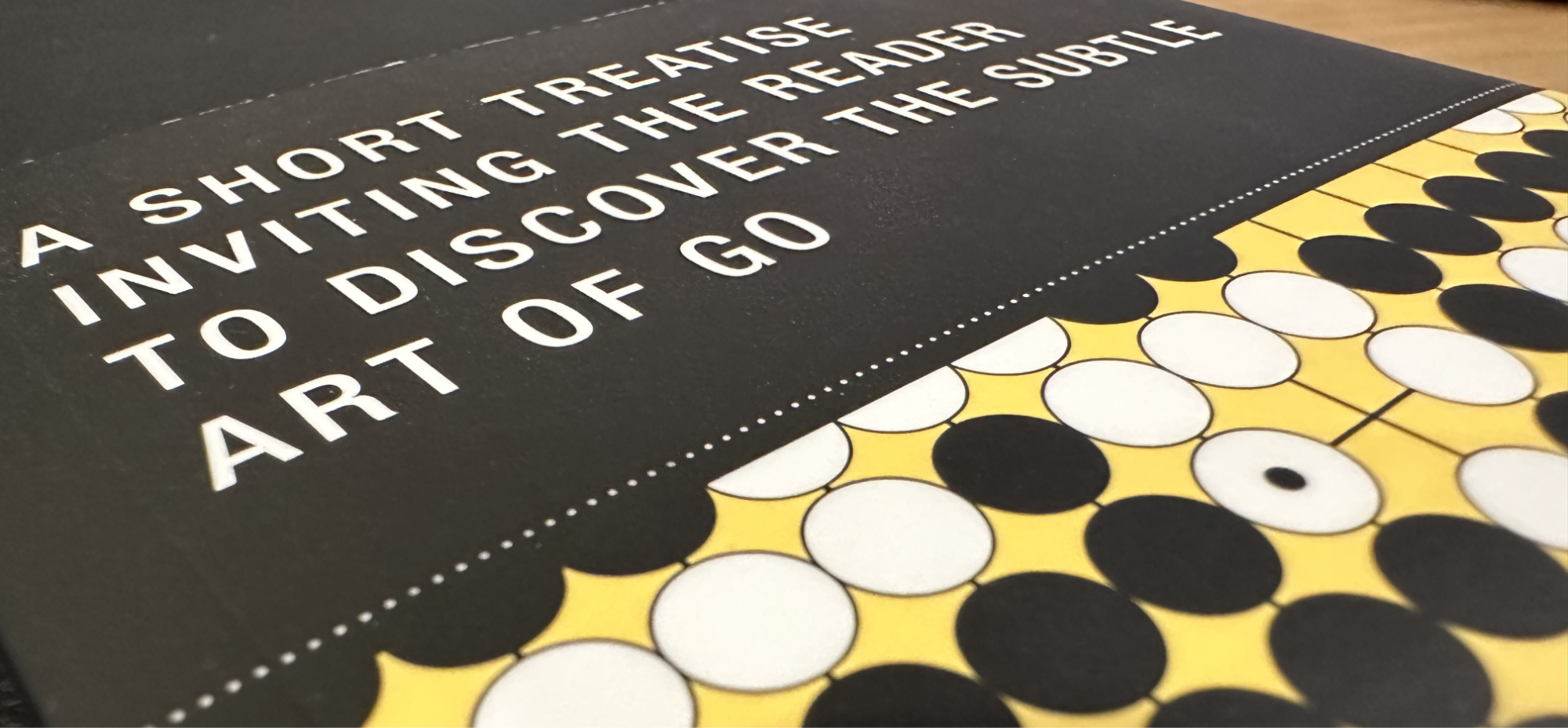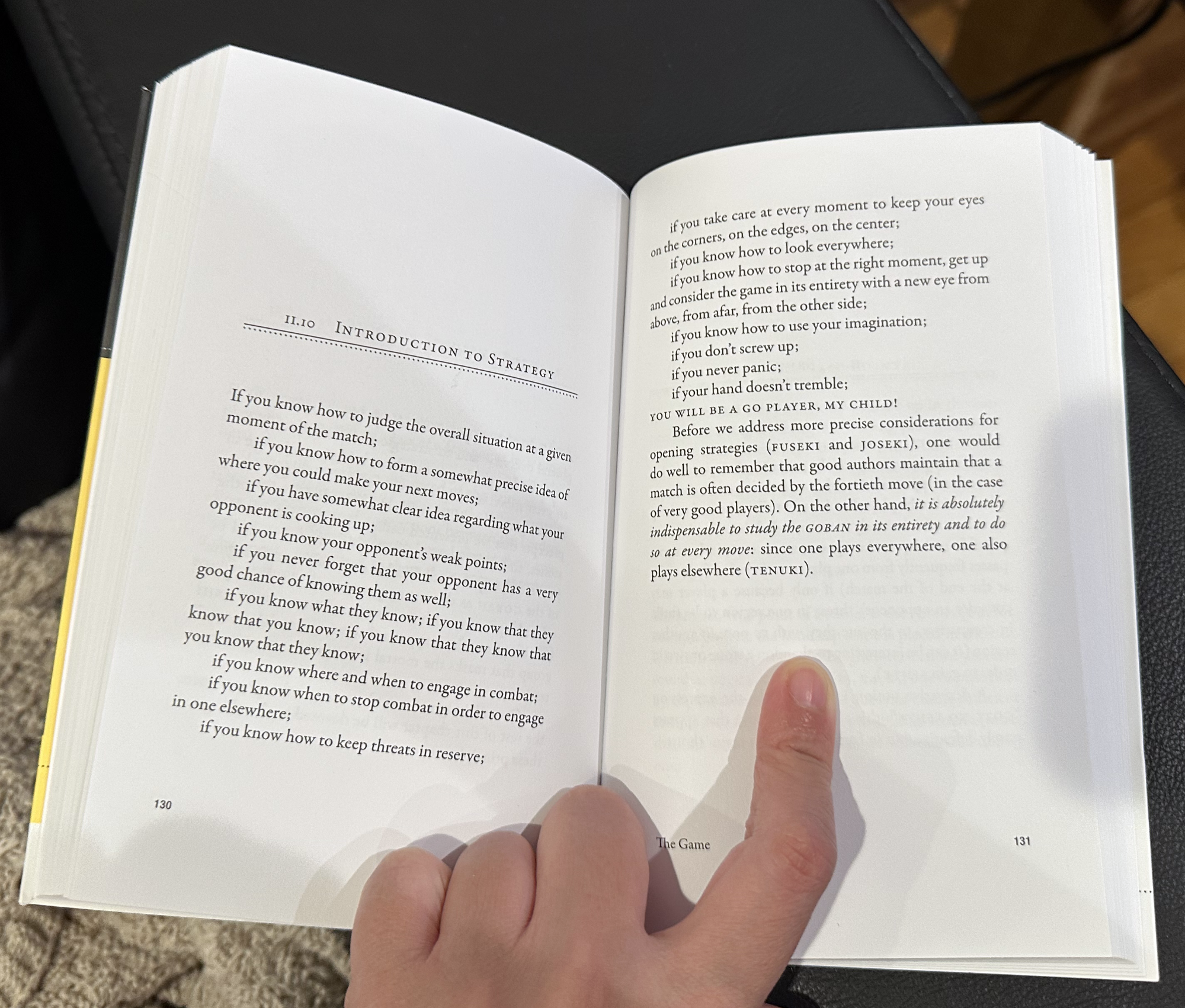
Only one activity exists to which go may be reasonably compared.
We will have understood it is writing.
This is a first post, of many posts, hopefully. The inspiration for this came from plodding through (very slowly) Writing for Developers, although the truth is, it’s not really reading about writing that begets more writing, but rather the act of doing the thing itself. Writing begets more writing; reading begets more reading. I’ve been quite rusty at the writing game (writing code does not really count), and so thought as creative endeavors go, it was easier to ease myself in with something relatively easy (writing about books) compared to something much more difficult (writing about code, or life). So…
“A Short Treatise Inviting the Reader to Discover the Subtle Art of Go” (Pierre Lusson, George Perec, Jacques Roubaud; translation by Peter Consenstein) had been sitting on my shelf unread since its publication in 2019. The six month sabbatical I have currently afforded me the time to finally go through my backlog and stop with the tsundoku, and I’m making rather good progress at a book per day. I should have read it much earlier, but am glad I finally did, and I do recommend it to others, lovers of go or otherwise. While the content, especially the second half, is targeted towards absolute beginners to the game (How to make a makeshift board! Use Courreges buttons if in need of playing pieces!), the book, I feel, is more of an attempt to make the reader feel the deep love the authors have for this game. It’s a love letter to go and the authors are trying to convince you that it would be wonderful if you, too, could join them as one of the enlightened French to the mysteries of the game.
It is because the genius of go stems precisely from what it hides as well as what it reveals, at any moment, at any level, in its different, hierarchized mysteries whose progressive mastery transforms the game every time:
A garden of bifurcating pathways, a labyrinth, the game of Babel, each step forward is decisive and each step forward is useless: we will never have finished learning…
Of course one cannot be rooting for a team without throwing a little shade, and it does so in spades; it cheekily tosses in offhandedly disdainful bon mots about chess and checkers every other chapter. Extra? Yes, the authors were being very unrepentently extra here, and it’s extremely funny. See: the entire chapter dedicated to Why You Should Not Play Chess (not labeled as such, of course, but might as well be).
With that said, if you really are new to the game, this actually is a terrible way to go about learning go, except in the most superficial way. You might actually be better served sitting down and watching the anime Hikaru no Go instead and come away with a better understanding of the game. The first half concerns itself waxing rhapsodic about go and the venerable history of the Japanese go association; the second half rushes you through the basic rules, some items about life and death, territories, liberties, and so on. A bit ‘draw the owl,’ so to speak. An amuse-bouche, to whet the appetite, but hardly sufficient. To be fair, the book was written in 1969, and rule books and playing boards were in scarce supply and took substantially more effort to find than today, so let it be said: there are certainly better ways to be introduced to playing go today, but really no better one to be introduced to its beauty.
This breezy treatment of the game itself extends to things such as strategy; the authors have all the faith that you will accomplish this, should you merely fulfill the steps they lay out. And, of course, how could you not? How to win at go is just so utterly straightforward, not even extending past two pages:

That’s right, you, too, will be a go player, my child!
Although the book was published in 1969, the English translation came out in 2019, and some aspects of the book have been updated to reflect this (resources on acquiring go boards, for example, includes the address of Kinokuniya in NYC, which did not exist during the time of the book’s original publication). In 2025, I would say most of the links/resources still hold quite well, however. The book is only available via print, so not available in ebook format; it’s beautifully printed in paperback format (maybe a bit larger, but less than trade paperback) though, and comfortably compact enough to read on a subway or bus commute.